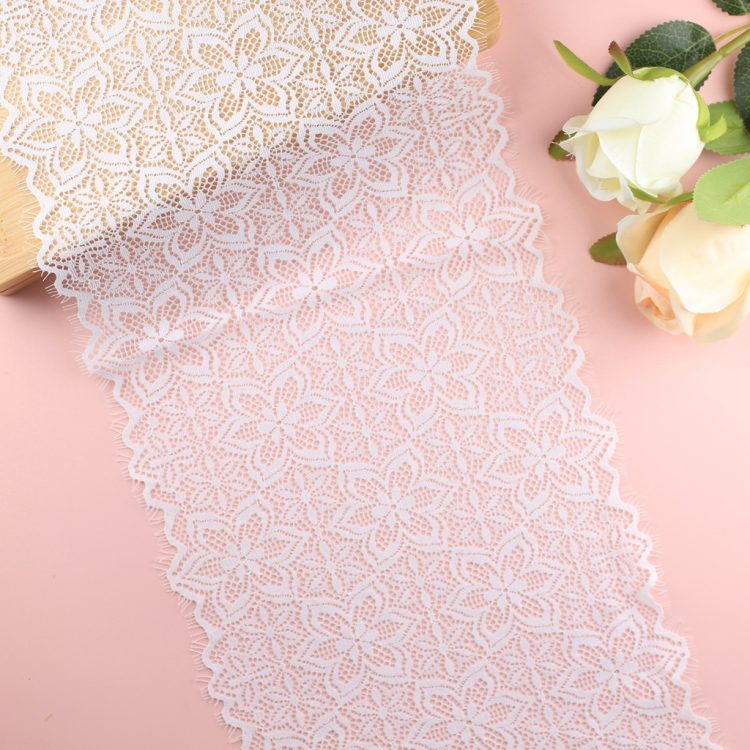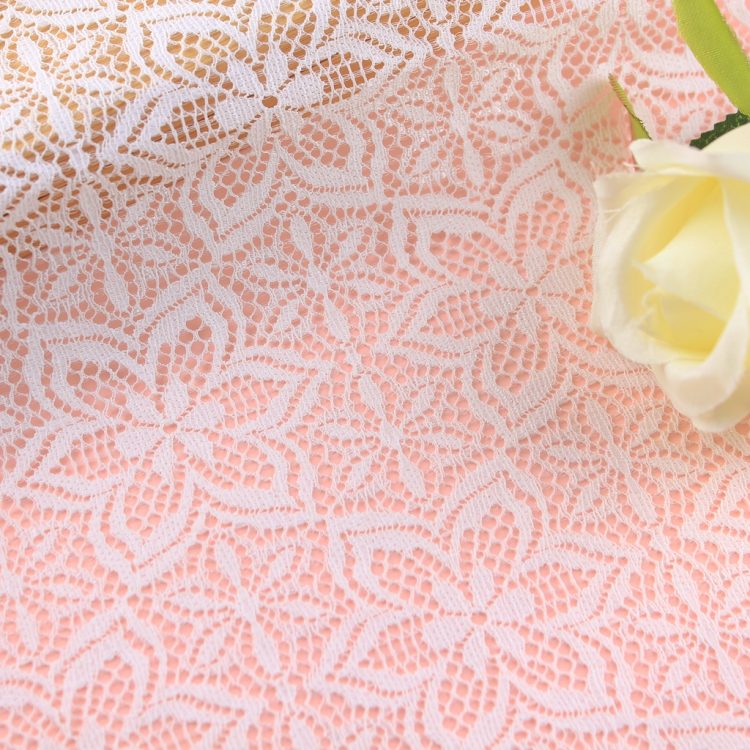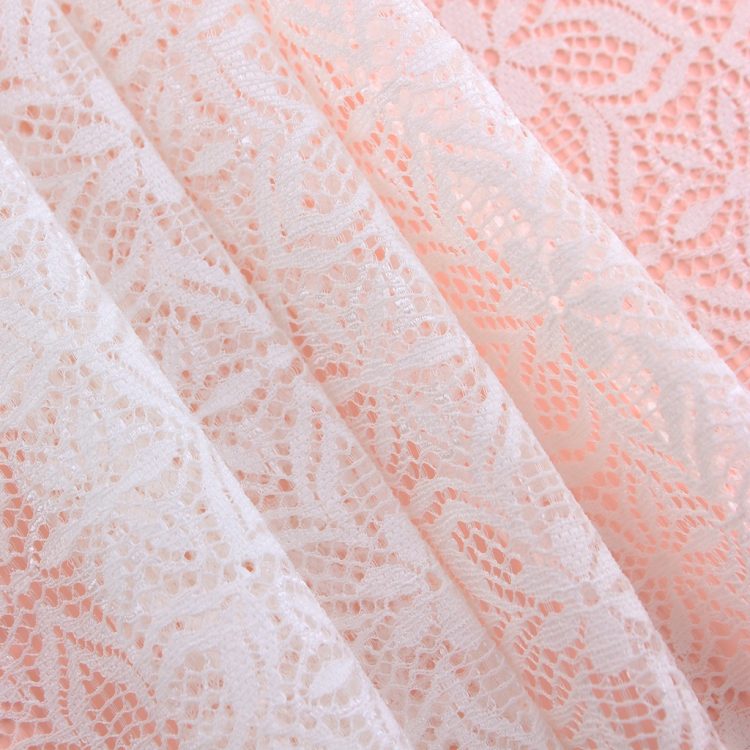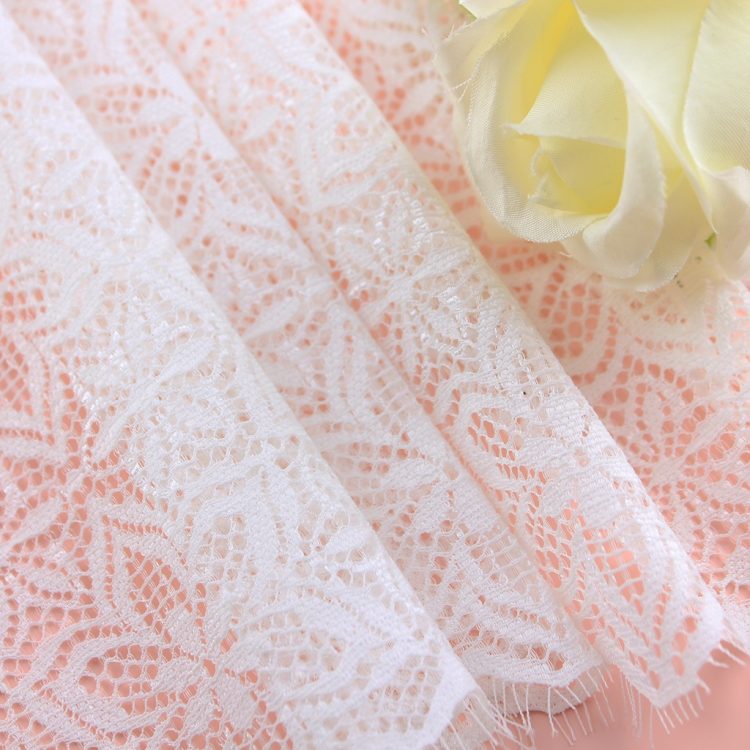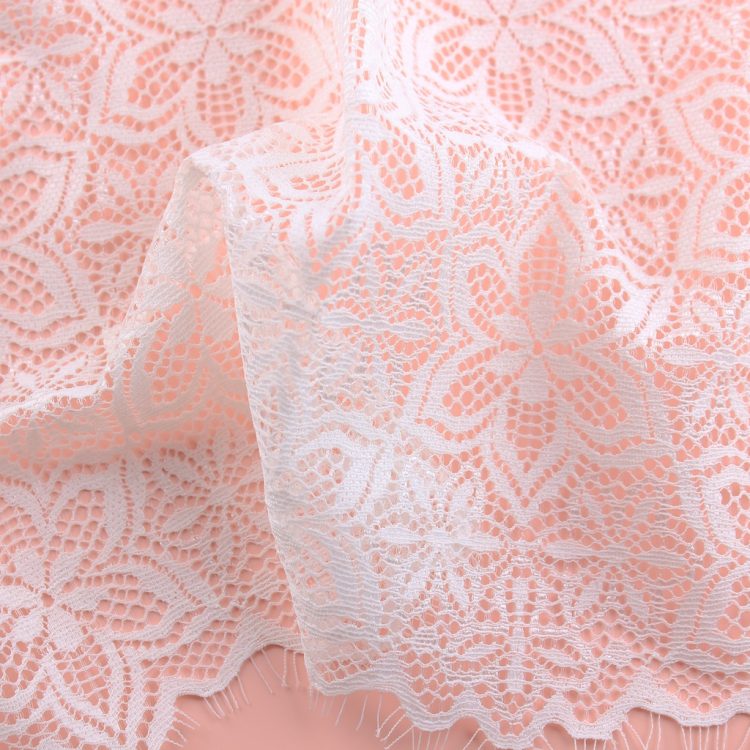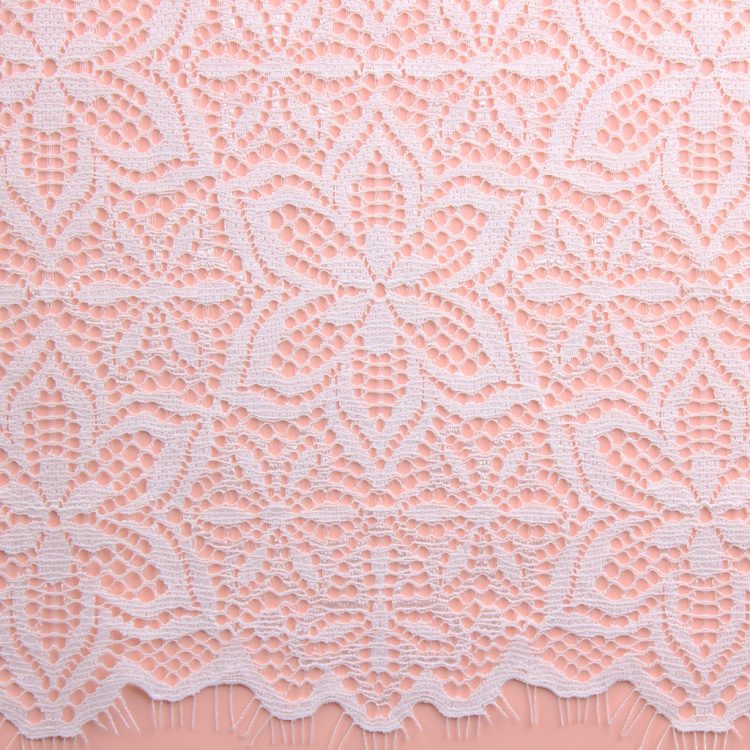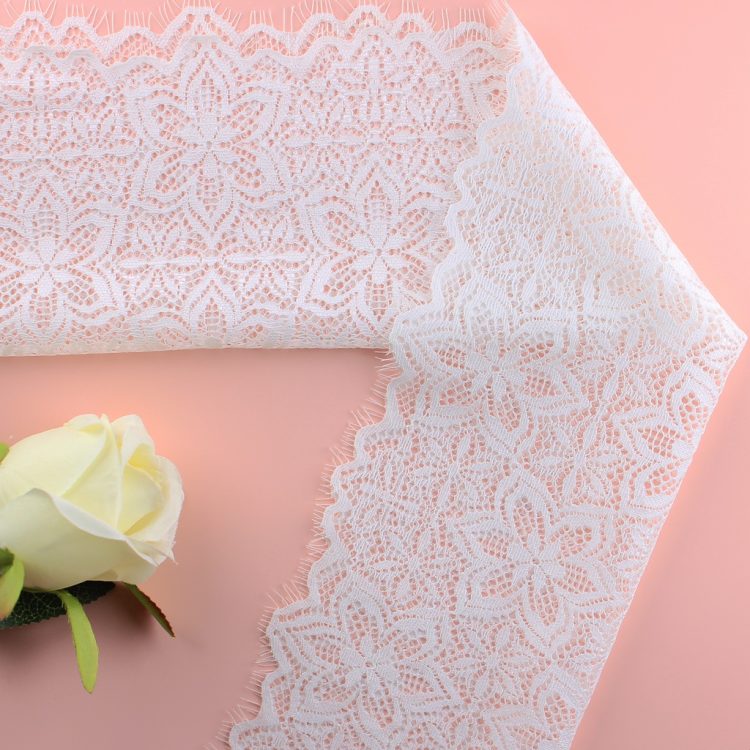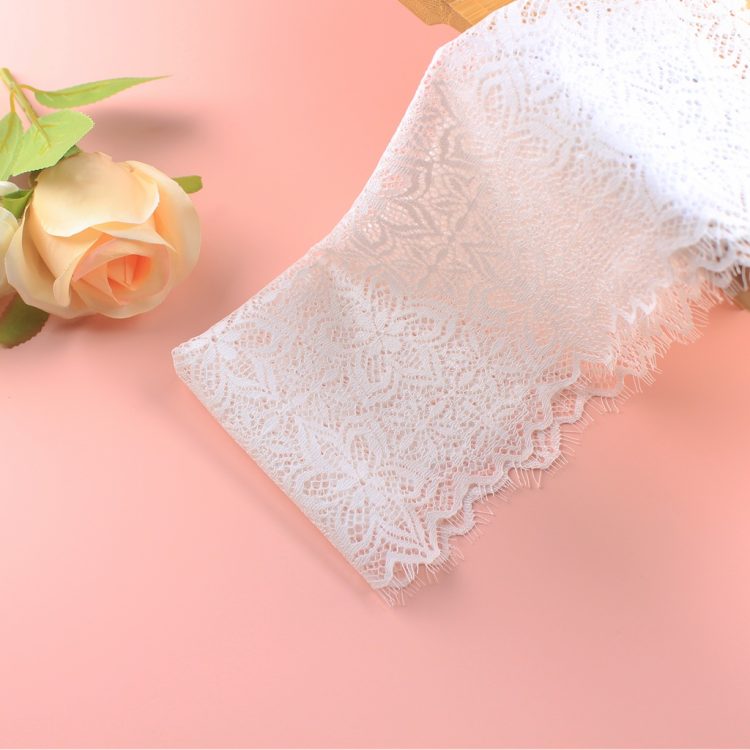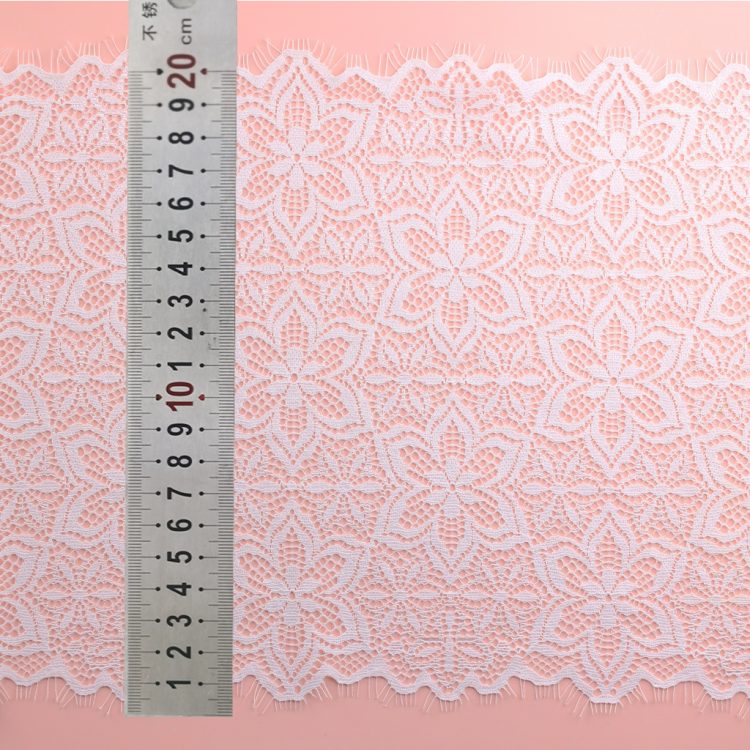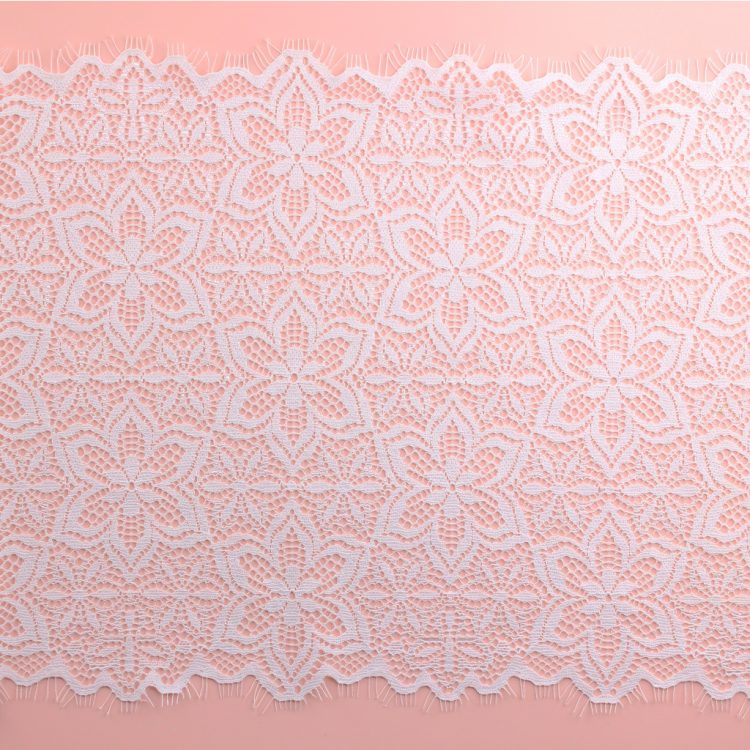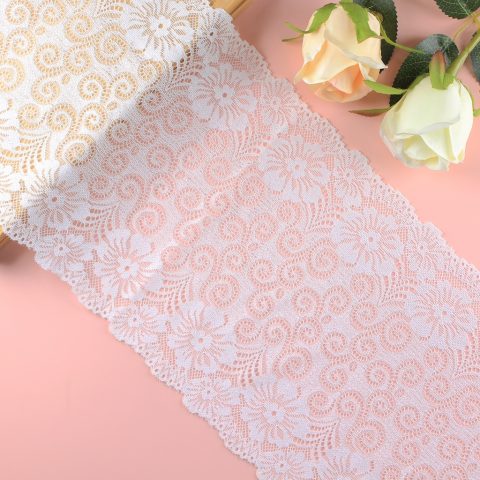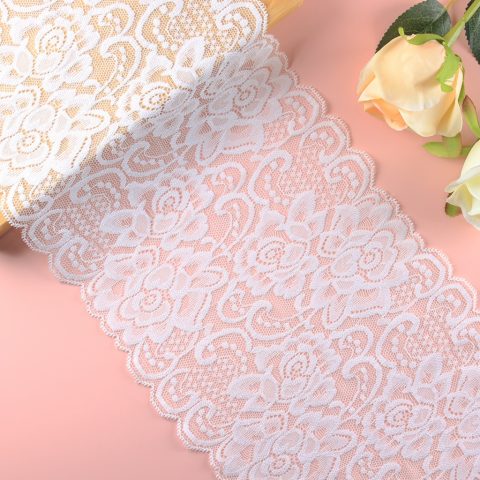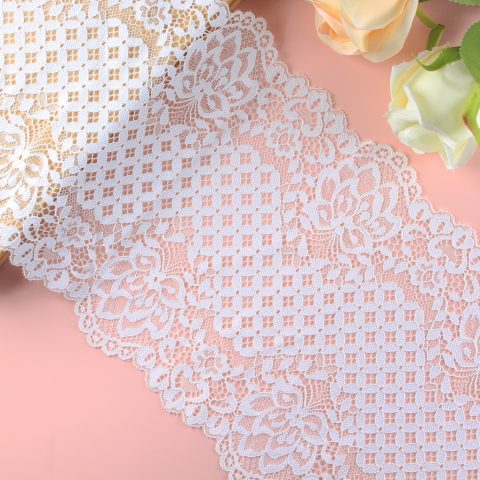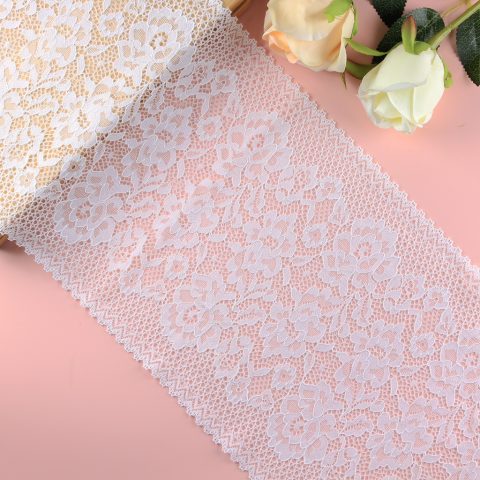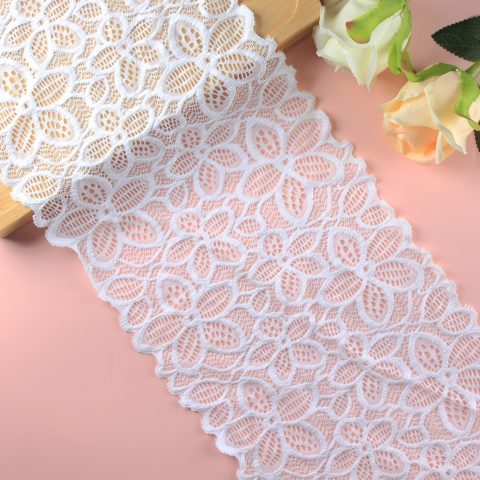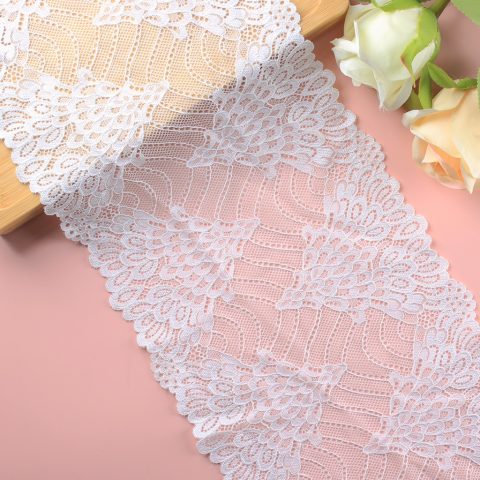This Stength Elastic Lace comes in width: 21.0cm.
Make your own lace embellishments and accessories!
Soft and stretchy!
Popular shabby chic elastic lace in a wide 21cm width and a large assortment of modern and vintage color options. Elastic lace is perfect for creating your own custom boutique-style headbands made to the exact size that you need! This soft material is wonderful against infants’ delicate skin! Also great for hair-ties, sewing, and so much more!
Sold per meters (100 cm x 21.0 cm or 1.0936 x 0.2297 yard)
Lace edge: both side
Composition: 100% polyester
Customization:
- Graphic Customization (Min. order 10000 yards)
- Customized Logo (Min. order 100 yards)
- Customized Packaging (Min. order 100 yards)
Care instructions:

* Please note that color in reality can be different from the color on the screen!
| 1 | Article : AMLE00019 | Fabric Type : Voile |
|---|---|---|
| 2 | Repeat : 7.5cm | Width : 21.0cm |
| 3 | Style : Guipure | Pattern : Geometric |
| 4 | Colors : White | Quality : A Grade |
| 5 | Technics : Knitted | Feature : Sustainable |
| 6 | 出码率 : 47.34 Y/kg | Weight : 19.01 g/Y |
| 7 | Composition : 100% Polyester | Certification : OEKO-TEXT |


